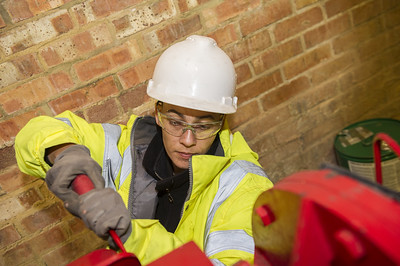A new survey by the ECMC Group may hold the key to slowing enrollment declines at community colleges. The survey of 1,000 high school students found that fewer than half want to go to a four-year college. Respondents cited cost as their primary concern. They also indicated that they prefer post-secondary education that takes no more than three years to complete.
This is the second recent survey by ECMC that showed a change in the direction current high school students plan to take. In September, ECMC released the results of a 3,000-person survey that indicated high school students were 20% less likely to attend a four-year institution than in previous years. The group, which regularly polls high school students about their plans, says the survey results are very consistent. High school students want career training education and direct-to-work plans, rather than university education.
The pandemic has added new determination among high school students to avoid educational debt. However, ECMC Group surveys show that students were looking for alternatives to four-year programs before COVID-19. In 2021, undergraduate enrollment has declined by more than 6% compared to 2019. That’s the largest two-year decline since the early 1970’s.
Less selective institutions have borne the brunt of enrollment declines, but students’ evolving post-secondary plans could change that. Emphasizing high quality vocational/occupational education programs and the low, overall cost could draw more students to community colleges.
Earnings could combat enrollment declines
Another factor that may stem enrollment declines is the bump in overall earnings. High school graduates who do not enroll in a college or university immediately following high school graduation can expect to earn $40,000 less during their twenties and early thirties. Less financial stability during this period could impact the timing of getting married, having children, buying a car, buying a home, or being promoted at work.
The opportunity to reverse enrollment declines among recent high school graduates is here. But capitalizing on it requires high-value degree programs that enable people to break into the workforce and make a living wage.
Anyone who lives in Washtenaw County should have deep concerns when Washtenaw Community College issues a press release extolling the virtues of a training program that prepare students for a job with an annual salary of less than $25,000. Those “career paths” will do little more than create ALICE households, and we already have enough of those here.
Based on 10-year earnings data, an associate degree (or an associate degree and a certificate) is more likely to deliver the economic benefits our community needs. That’s also what graduating high school students indicate they want.
Washtenaw County residents have invested hundreds of millions of dollars since 1966 in vocational and occupational education programs. The current and previous administration made enormous strides toward eliminating them in favor of four-year transfer programs. Instead of decimating vocational and occupational education programs, the WCC administration should rebuild them to combat WCC’s enrollment declines.
As it turns out, it’s what prospective students and employers want.
Photo Credit: IFA Tech Ed , via Flickr














